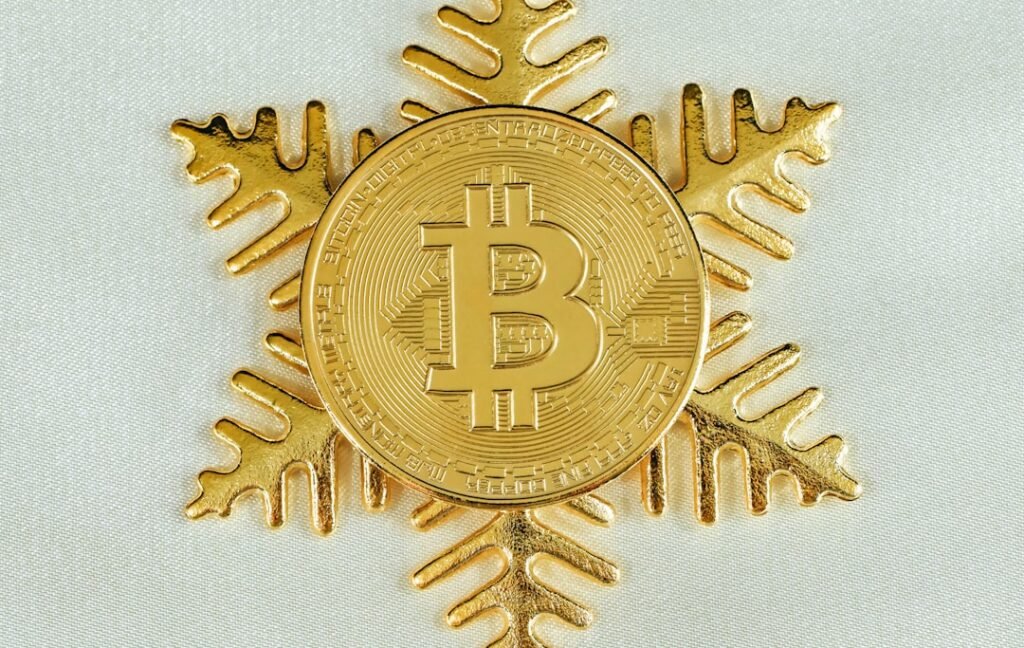フィンテックの革新:ブロックチェーンがもたらす10の変化
In the dynamic convergence of technology and finance, few innovations have promised—and delivered—a rewrite of the rulebook quite like blockchain. This distributed ledger technology is more than the foundation of cryptocurrencies; it is a paradigm-shifting force driving unprecedented efficiency, security, and inclusivity across the entire financial sector. From redefining transactional trust to creating entirely new asset classes, blockchain's impact is profound and far-reaching.
The global fintech market, expected to grow from $209.7 billion in 2024 to $644.6 billion by 2029, is being significantly propelled by advancements in blockchain and its symbiotic relationship with other technologies like the Internet of Things (IoT). Its benefits are not theoretical; they are actively reducing costs, enhancing security protocols, and democratizing access to financial services for underserved populations worldwide.
As we delve into the top changes ushered in by this technology, we explore how blockchain is not just an addition to the fintech toolkit but is fundamentally reshaping the industry's very foundations.
1. Revolutionizing Cross-Border and Real-Time Payments
One of the most immediate and impactful applications of blockchain technology is in the realm of payments, particularly cross-border transactions. Traditional international wire transfers are often slow, expensive, and opaque, burdened by multiple intermediaries each taking a fee and adding time.
Blockchain introduces the possibility of zero-cost, instant domestic and international transactions. Systems like India’s Unified Payments Interface (UPI) exemplify the move toward real-time settlements, with transactions skyrocketing to account for 75% of all digital payments in the country. Blockchain extends this concept globally. By enabling peer-to-peer value transfer without traditional banking intermediaries, blockchain-based systems can settle transactions in minutes or seconds, 24/7, for a fraction of the cost.
This is profoundly transformative in emerging markets, where it enhances financial inclusion and makes instant payments a new norm, fostering greater economic participation and growth.
2. Unprecedented Security and Fraud Reduction
At its core, blockchain is a security technology. Its structure as a distributed and immutable ledger ensures that once a transaction is recorded, it cannot be altered or deleted. This transparency and permanence create a verifiable and tamper-proof record of all transactions.
This inherent security is a powerful weapon against financial fraud. For an industry that reported losses of $12.5 billion to fraud in 2024, the implications are massive. Blockchain's ability to provide a single, trusted source of truth makes it exceptionally difficult for bad actors to manipulate records or create synthetic identities. Furthermore, the technology underpins advanced verification systems. When combined with IoT sensors, blockchain can create secure, unchangeable logs of events—from the location of a shipped good to the execution of a smart contract—drastically reducing opportunities for fraud and errors in complex processes like trade finance and insurance.
3. The Rise of Decentralized Finance (DeFi)
Perhaps the most revolutionary concept born from blockchain is Decentralized Finance, or DeFi. DeFi aims to recreate traditional financial systems—lending, borrowing, trading, insurance—using blockchain-based smart contracts, eliminating the need for central intermediaries like banks or brokerages.
This creates an open, permissionless, and transparent financial ecosystem. Anyone with an internet connection can access DeFi applications to earn interest on savings, take out loans, or trade assets directly with other users. This disintermediation not only reduces fees but also promotes unprecedented levels of financial inclusion, offering services to global populations previously excluded from the traditional banking system. While still evolving, DeFi represents a fundamental shift toward a more open and accessible global financial infrastructure.
4. Transforming Supply Chain Finance and Transparency
Blockchain, especially when integrated with the Internet of Things (IoT), is revolutionizing supply chain finance. In traditional supply chains, the movement of goods and the associated payments involve massive paperwork, delays, and a high risk of fraud due to a lack of transparency.
A blockchain creates a shared, immutable ledger that all parties in the supply chain—from the manufacturer and shipper to the banker and end buyer—can access in real-time. IoT devices track the location and condition of goods, and this data is recorded on the blockchain, making it trustworthy. This allows for:
- Real-time tracking and verification of goods and payments.
- Automated payments via smart contracts that trigger upon the fulfillment of predefined conditions (e.g., a delivery confirmation recorded on the ledger).
- Reduced costs and risks by minimizing manual processes, disputes, and the potential for counterfeit goods.
This synergy between blockchain and IoT brings unparalleled transparency and efficiency to global trade.
5. Identity Verification and Digital Identity
A significant barrier to financial inclusion is the lack of a verifiable identity. Blockchain offers a solution through self-sovereign digital identities. Instead of storing sensitive personal data on centralized servers vulnerable to breaches, individuals can own and control their identity credentials on a blockchain.
They can then grant permission to financial institutions, lenders, or other service providers to access specific, verified pieces of information (e.g., proof of age, credit history) without exposing the underlying data. This enhances privacy and security for users while streamlining and securing the Know Your Customer (KYC) and onboarding processes for institutions. It dramatically reduces the risk of identity theft and fraud while making financial services accessible to those without traditional forms of ID.
6. Automating Trust with Smart Contracts
Smart contracts are self-executing contracts with the terms of the agreement directly written into code. They reside on a blockchain and automatically execute when predetermined conditions are met.
This automation removes the need for intermediaries like lawyers, notaries, and escrow agents, reducing time, cost, and the potential for human error or manipulation. Their applications are vast:
- In insurance, they can create smart policies that automatically trigger claims and payouts based on verified data (e.g., a flight delay recorded on a trusted database).
- In lending, they can automate the release of funds and repayment schedules.
- In real estate, they can automate property transfers once payment conditions are satisfied.
Smart contracts automate trust, enabling complex financial agreements to be carried out seamlessly and without third-party intervention.
7. Tokenization of Real-World Assets (RWA)
Blockchain enables the tokenization of physical and intangible assets—from real estate and fine art to equities and bonds. This process involves creating a digital token on a blockchain that represents ownership of a real-world asset.
This unlocks immense value by making traditionally illiquid assets divisible and easily tradable. For example, a valuable commercial property can be tokenized into thousands of digital shares, allowing for fractional ownership and opening up investment opportunities to a much wider pool of investors. It increases market liquidity, reduces barriers to entry for high-value investments, and simplifies the process of buying, selling, and transferring ownership, all while maintaining a transparent and auditable record of ownership on the blockchain.
8. Enhancing Regulatory Compliance (RegTech)
The regulatory technology (RegTech) sector is being transformed by blockchain. Financial institutions face immense complexity and cost in meeting evolving compliance and regulatory reporting requirements.
Blockchain's immutable audit trail provides regulators with a transparent, real-time view into transactions, making compliance reporting far more efficient and accurate. Instead of institutions manually compiling and submitting reports, regulators could be granted permission to access a secure, live ledger of compliant transactions. This reduces the administrative burden on firms, minimizes the risk of human error in reporting, and allows regulators to conduct more effective and timely oversight. This application of blockchain, known as "Supervision 2.0," promises to make regulatory compliance a byproduct of operations rather than a costly afterthought.
9. The Growth of Stablecoins and Programmable Money
Stablecoins—a type of cryptocurrency pegged to a stable asset like the US dollar—have emerged as a powerful payments tool built on blockchain rails. Their usage has grown massively, with approximately $2.5 trillion in payments settled annually.
They combine the instant, borderless, and secure nature of cryptocurrencies with the price stability of traditional fiat currencies. This makes them ideal for everything from remittances to everyday commerce. Furthermore, as they are digital and native to blockchain, they are inherently programmable. This programmability allows for the creation of "smart money"—currency that can be governed by rules, such as only being spendable at certain retailers or expiring after a certain date, opening up new possibilities for corporate treasury management, targeted aid distribution, and innovative loyalty programs.
10. Fostering Financial Inclusion and Green Banking
Finally, blockchain is a powerful driver of financial inclusion and sustainable finance. By providing a low-cost, accessible infrastructure for financial services, it offers the unbanked and underbanked populations of the world access to savings, credit, and insurance without the need for a traditional bank branch.
Furthermore, blockchain is paving the way for green banking initiatives. Its transparency is crucial for tracking the environmental impact of investments and ensuring the integrity of carbon credit markets. Blockchain can create immutable records for carbon footprint tracking, prevent double-counting of carbon offsets, and support transparent ESG (Environmental, Social, and Governance) reporting, aligning financial growth with sustainability goals.
The Path Forward
The changes brought by blockchain are not isolated upgrades; they represent a fundamental re-architecting of the financial world. From securing transactions and automating contracts to tokenizing assets and including the excluded, blockchain is providing the foundation for a more efficient, transparent, and equitable financial ecosystem.
While challenges around regulation, scalability, and widespread adoption remain, the trajectory is clear. Blockchain is moving from a speculative technology to the bedrock of critical financial infrastructure. For institutions and innovators, understanding and embracing these changes is no longer optional—it is essential for staying competitive in the rapidly evolving future of finance. The decade of blockchain's promise is now dawning, and its impact will only continue to deepen and expand.












